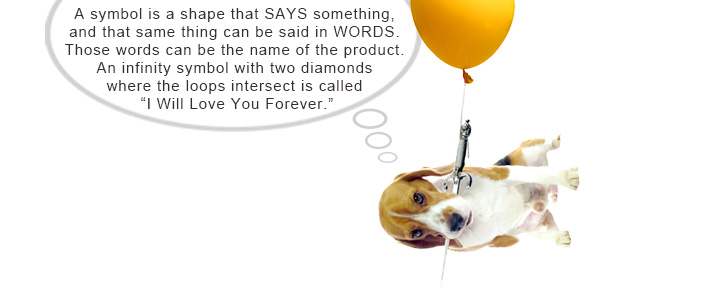
When Words are Images and Images are Words
There are four kinds of thought.
Verbal Thought is hearing a voice in your mind.
Analytical Thought is deductive reasoning that seeks to forecast a result.
Abstract Thought embraces fantasy and all things intangible.
Symbolic Thought connects the pattern recognition of the right brain with the deductive reasoning of the left-brain to relate the unknown to the known.
You can communicate the abstract by pointing to something that shares an essential attribute with the abstraction you are trying to describe. Symbols are a language of the mind. This is the essence of all similes and metaphors.
But that observation is just the beginning.
I have no proof of what I am about to tell you. So if you continue to read, please understand that I will be sharing nothing more than a deeply held pet theory of mine. I can reference no sources other than 25 years of experimentation and my conversations with Indy.
I believe the 4 types of thought are composed of 12 essential languages. Think of these 12 languages as the Operating System of the mind.
I believe Numbers are a language of the mind.
There are things that can be said in the language of Numbers that can be said in no other language. It is easier to learn mathematics when you think of Numbers as a language and the order of operations in math as the grammar and syntax of that language.
I believe Color is a language. Red and pink say different things.
Likewise, Shape is a language. A curve says something different than an angle.
Arranging colors and shapes so they speak to us is the essence of composition in photos, paintings and illustrations. It is the basis of architecture, Feng Shui, and industrial design (cars, jewelry, furniture, etc.) In fact, it underlies every type of visual communication that causes people to think and feel a certain way.
The human mind is given wings by its unique ability to attach complex meanings to sounds.
When you use words, you are rapidly choosing which of the 44 Phonemes of the English language shares an essential attribute with the fractional abstraction you are trying to describe.
Yes, the entirety of the English language is composed of just 44 sounds. This is not a pet theory of mine. This is settled science among the linguists of the world.
When you speak or write, you are connecting Phonemes together in rapid succession to create words – sounds – that represent what you are trying to communicate.
Did you know the written word has no meaning until it has been translated into the spoken word it represents? Graphemes, the letters of the alphabet and certain combinations of those letters like ch, sh, and th, merely represent the sounds – the phonemes – to which we attach deep meaning.
Look again at ch, sh, and th. Don’t say the names of the letters in your mind. Make the sounds that each of those two-letter combinations represent, “ch,” “sh,” “th”
Did it occur to you that “th” has two different sounds? Voiced “th” is the sound we hear in “the”. Unvoiced “th” is the sound we hear in “with”.
It is my belief that a basic understanding of the 12 Languages of the Mind will allow you to be a more proficient communicator. Indy Beagle gave you a glimpse of one of them – Symbol – before he got carried away in today’s illustration. And I gave you a glimpse at 4 of them: Number, Color, Shape, and Phoneme.
Perhaps another day, if you are interested, we’ll tell you about the other seven.
Roy H. Williams